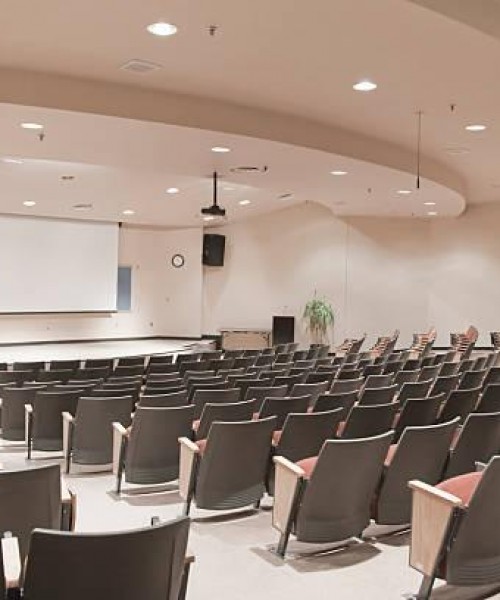Political instability, Law and Order Situation
The overall arching theme is that for a robust economy we should have political stability, law and order and security. The sooner the country is gotten rid of this image of political instability, poor law and order situation and insecurity, whereby investors from all over the world hesitate in coming to Pakistan and invest, we will not be able to make any progress in this country.
Recommendations for Economic Recovery and Progress
Increase Domestic Resource Mobilization
The reason behind the fiscal deficit is extend to its low revenue collection. The share of Tax in overall GDP is only 9 % and therefore it is more room available to expand the tax net, improve tax collection and remove various exemptions and concessions. Along with plugging the holes in State owned corporations and making them efficient the public dis-savings can thus be reduced raising the national savings rate. Agriculture incomes are exempt, professionals, retailers, wholesale, transport owners and many other services providers evade taxes by paying not at all or a small fraction of what is due. Studies indicate that with the same tax rates the tax authorities should be able to raise as much as S8 billion of additional revenues (compared to $16 billion actual collection) by tightening enforcement and compliance, carrying out robust post assessment audits, better supervision of tax administration and plugging the loopholes .
Expand the Share in the World Trade
In the period of 1990, Pakistan's share was 0.2 % of the global trade. After 20 years it has come down to 0.12 % in a very buoyant world economy. Global trade has been growing much faster as compared to the world output. Asian countries have captured a major chunk of world exports and the best example is that of China that has increased its share to an impressive 8 %. Pakistan has failed to take advantage of these opportunities and is stuck with only a few commodities - textiles, leather, rice, sports, goods and the surgical goods. We have not entered the markets for more dynamic products. All our exports are to a few markets - the U.S.A., EU and the Middle East. So this narrow export base and very limited geographical spread are not allowing us to expand our share. By improving the quality of our products, fitting in the global supply chain, investing in research and development, and diversifying towards Asian markets the prospects can improve.
Building of Human Capital
It is now well documented that for the countries to prosper and progress on a sustained basis there is no substitute other than building up human capital. Private Sector, Public Sector, NGOs, local communities, philanthropists, etc., all here to put their hands on deck and participate in making sure that every child goes to school, every high school graduate has some technical and vocational skill and every eligible person goes for higher or professional education. We need to invest massively in human capital to catch up with the rest of the world because the world economy is going to be a knowledge based economy. One has to acquire and assimilate the knowledge and apply in order to solve problems. Under the new paradigm of development human capital formation is more important than machinery and equipment. Pakistan can leap frog by building up the institutions, infrastructure and incentives for human capital formation that other countries have successfully demonstrated.
Privatization is Indispensible
The oversight, monitoring and guidance capabilities of public enterprises are ridden with the aggravated problems of principal - agent relationship. As the Board Members, however able and honest they may be, have no direct personal stakes in the well-functioning of a public enterprise, they cannot be expected to devote as much time or energy to the Board's affairs as the private strategic investors would. Thus, the governance structure of a public sector enterprise would always remain second best to its private sector competitors and put it at a comparative disadvantage. If a more callous person unfortunately appointed to chair the Board, the appointments, award of contracts and transfers and postings will do further damage to the performance of the company. At the moment, 61 public corporations await privatization as assessed by privatization commission of Pakistan and once done proceeds would help bridge the looming fiscal deficits. Similarly, entities like steel mills, PIA and WAPDA are eating into the governmental expenditures. The following broad objectives are sought to be achieved by privatization:
Reduction in Fiscal Deficit
Fiscal deficit can be reduced by:
Increase in the efficiency levels
Foster competition
Broad basing of equity capital
Releasing resources for physical and social infrastructure
Global Competitiveness
Pakistan ranks quite low on all the indices of international competitiveness. Export-GDP ratio remains low, the composition of exports is heavily skewed towards low-tech goods for which world demand is either stagnant or declining and the productivity levels in all sectors of the economy fare poorly in relation to other competing countries. Improving this competitiveness should occupy the center stage of public policy.
Use of Technology
Technology is spreading like a wild fire. It was impossible to imagine even five years ago that more than half of the inhabitants of small towns and villages of Pakistan would have access to mobile telephones or internet. 95 million Pakistanis out of 170 million have mobile phones today and are using them for banking services, information on climate/weather, agriculture extension, health, education, etc. It is a powerful tool which can improve the lot of those who have remained disadvantaged due to geographical distance and lack of physical access to services and information. Use of information / communication technology for the betterment of social and economic problems of Pakistan provides a huge untapped potential that can be exploited. A more holistic and comprehensive approach that deploys technology for poverty reduction can to be put in place.
Young Labor Force
Pakistan is one of the few countries which has a young labor force which can be harnessed for its own and global economy. Japan, Europe, U.S.A. and after 2050 China are going to have aging population where the ratio of old to young people is going to increase. India and Pakistan are two countries where the ratio of younger people to the older ones is going to rise. If these young men and women are equipped properly, the female labor force participation is increased and skills and knowledge are imparted to the youth, they can become the labor force for the rest of the world. In 2001, worker remittances were less than a billion dollars; today they have reached almost 7-8 billion dollars. Now this can be multiplied by three or four times if more of the workers going for overseas employment are educated and skilled. If the domestic economy is unable to create adequate number of employment opportunities for those young men and women there could be social upheaval. Therefore, it is imperative to create such educational opportunities and avenues for them that train them in the kind of skills which are needed not only by the national economy but also by the international economy.
Devolution and Decentralization
As the population is increasing, one cannot govern Pakistan from Islamabad, Karachi, Lahore, Peshawar or Quetta. One has to devolve powers, decentralize and delegate authority, provide resources to the local / district governments so that they can take decisions at their own. Those decisions would be very much in accordance with the requirements and the needs of those communities. Decision making powers, financial resources and administrative authority should therefore be devolved to the people at the grassroots level as it would lead to much efficient allocation and utilization of resources. There must, however, be accountability of the Local Governments by the Provincial Governments and of Provincial Governments by the Federal Government but not interference or usurpation of powers. Under this scenario the same amount of resources can yield much higher growth rate. For example, if under the present centralized structure, investment rate of 24-25 % generates 6-7 % GDP growth under the devolution model the growth rate can rise to 8-9 % with the same resources.
Income Distribution
Pakistan has income inequalities across households, rural / urban divide, gender and regions. Two of the provinces - Baluchistan and NWFP - along with the Federally Administered Tribal Areas have lagged behind Punjab - the most populated province and urban Sind. The recent successful award of the National Finance Commission (NFC) has tilted the distribution of divisible pool towards the poorer provinces. The Parliament is debating some significant constitutional amendments that will transfer power to the Provincial and local government and give greater autonomy to them. These measures will provide an excellent opportunity to invest resources in these backward areas and improve income distribution in the country. The impact on social cohesion and national integration from these measures is likely to be favorable and the trust deficit between the Federal and the Provincial Governments would be overcome. The overall impact would be enhanced productivity from less frustrated labor force of the nation.
Continuity of Policies
The continuation of political stability and a predictable, orderly and constitutional transition of power from one regime to the other would add a lot of strength to Pakistan's economic prospects. The risks associated with an uncertain political transition process would be mitigated if different political parties take over the reins of the government at predetermined regular intervals of time through fair and transparent electoral process. Fortunately, the thrust of economic policies of all leading political parties in the country is much the same but this positive aspect has been lost in the loud noise of political bickering, venomous rivalries and unwarranted accusations against each other. The links between political stability, economic growth and social cohesion are mutually reinforcing and need to be further nurtured and developed in Pakistan. The lessons of the 1990s should clearly teach us that the gains achieved so far can be reversed if we do not manage our political governance with tolerance, a healthy respect for dissent and differences of opinion, and reliance on institutions rather than personalities.
Conclusion
The basic thrust of this paper is that Pakistani economy has made a substantial progress during the last sixty years but it has lagged behind other Asian countries in realizing its full potential. The current economic difficulties starting from 2007 have arisen due to a variety of internal factors and policy and management lapses. The stabilization program introduced in November 2008 with the assistance of the IMF is on track. But the main challenge facing the country is how to resume the high growth trajectory that Pakistan had achieved between 2002 and 2007. The constraints are formidable but the opportunities do exist both domestically as well as externally whereby this goal can be attained .But this would require some tough political decisions, better governance, peace and security in the country, and shift from dependence on foreign aid to external trade and investment. Pakistan has to shift its orientation from the West to the East in its foreign economic relations to align and benefit from the changes in the global economic balance of Power.
经济学论文代写 巴基斯坦经济变化史










